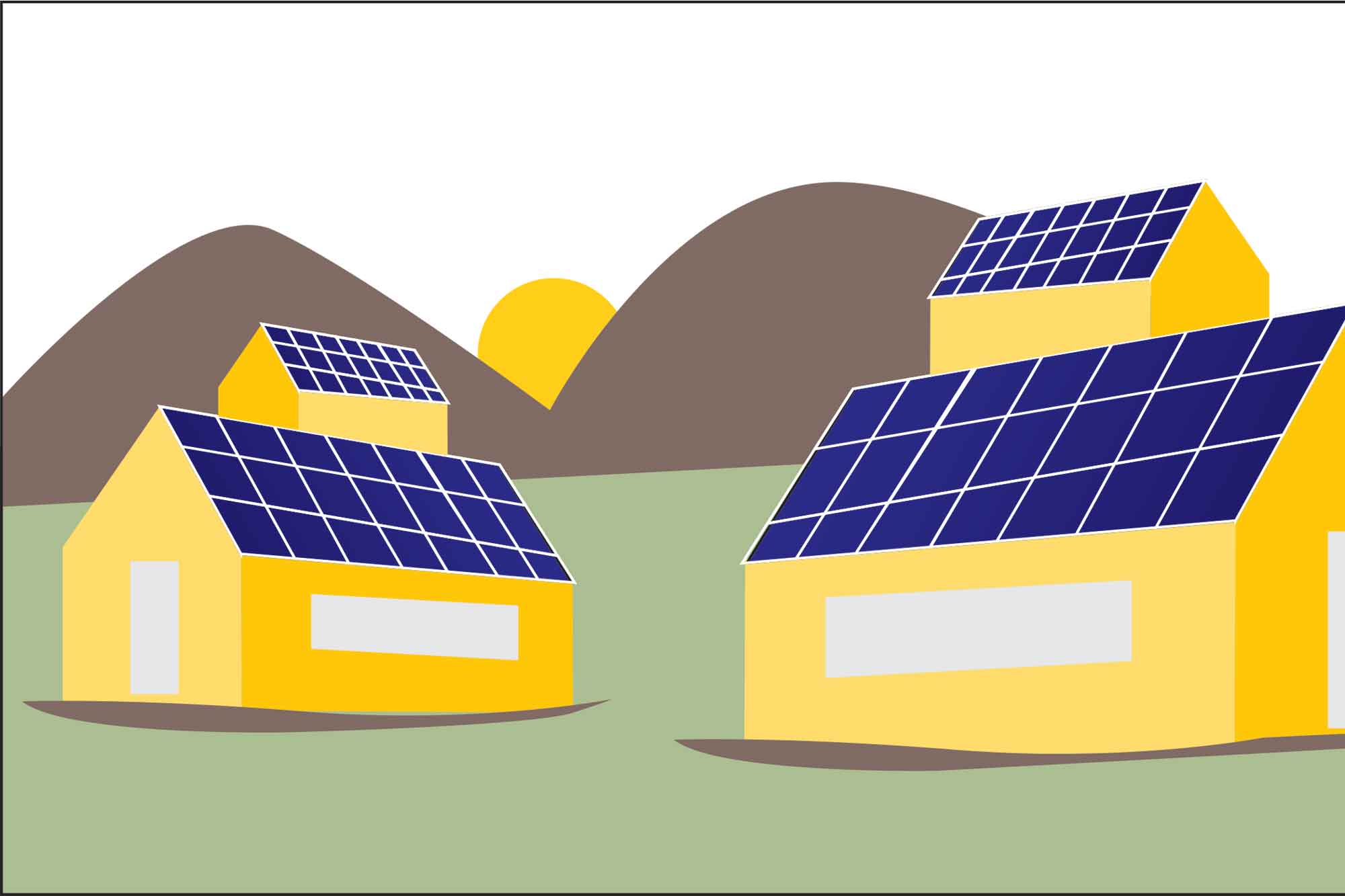Rooftop PV: a win-win for all stakeholders
By Edit Team | May 28, 2014 8:57 am SHARE

Today the equation between amount of energy required and energy generated is imbalanced. Hence natural and sustainable energy sources are to be utilised. Of all green energy options, solar energy finds itself way ahead and rooftop PV plant is emerging as a key solution.
The growing challenges with reliable grid supplied power including escalating prices, usage of captive power solutions is an alternate practiced across small to large enterprises. However, economic viability and high carbon footprint make these options non- sustainable, which reinforce the case for decentralised renewable energy. Solar energy has definitely a distinct advantage for meeting localised energy needs and rooftop PV plant is a proven option in converting solar energy to generate electricity reliably using free rooftop area.
A rooftop solar PV plant is a system which uses one or more photovoltaic (PV) panels to convert sunlight into electricity. The various components in a rooftop solar PV plant includephotovoltaic modules, mounting systems, cables, solar inverters and other electrical accessories. Rooftop solar PV plant is an easy way to generate electricity conveniently. Thegeneration cost also gets lower due to a considerable drop in the cost of solar panels. These plants can be installed on the rooftop of commercial and residential buildings, factories,warehouses, etc. There are multiple benefits of such rooftop solar systems which include energy security and cost savings, no extra space, less expenditure on operations andmaintenance etc.
PV-based energy generation can be broadly segregated into three categories as:
• Grid connected PV power plants
• Off-grid applications like water pumping, street lighting, telecom tower
• Grid interactive rooftop PV.
According to Deepak Thakur, Head, Solar Division, Thermax Ltd., “As a decentralised power solution, rooftop solar PV is a globally well-established and proven option which assures user reliable power generation with an economic life of around 25 years and that too with zero fuel cost and marginal operating expenses. At current price points, PV generated electricity costs are at par or better than actual grid tariff paid by industrial and commercial users in certain Tier 1 and 2 cities. With time, this viability is expected to only spread across other locations. In addition to every unit of solar energy generated saving 0.7 kg of CO2, actual economic return is also delivered.” Thermax offers off-grid or rooftop and grid connected solar PV solutions.
While talking on the points to be considered in designing rooftop solar systems, he said, “Though specific roof profile and facility configuration need to be taken into consideration while designing such plant, but still it has to qualify as ‘plug and play’ solution due to sub-system standardisation. Maintenance cycles are relatively simple encompassing periodic module cleaning and preventive maintenance of inverters, batteries etc.”
The Indian government provides CAPEX subsidy up to a specific capacity for promoting rooftop PV systems along with accelerated depreciation benefits. These measures enhance economic attractiveness of rooftop PV solution. More importantly the emerging trend across certain states pertaining to ‘net metering’ policy wherein rooftop PV system owners can feed excess power to the grid and get compensated for it will go a long way in future.
One Avighna Park has been pre-certified as a Platinum rated green building by the IGBC. The luxury project in the heart of Mumbai is also a recipient of 25 prestigious awards including the “Best International Residential High-Rise Development” by International Property Awards, London for two consecutive years, 2012 and 2013.
The promoters of One Avighna Park also believe in energy conservation. It proposes to set up a solar power system with PV panels that will not only help in stabilising electricity costs, but also provide reliable electricity from clean, renewable energy. This would ensure reduced fuel consumption and energy bills for the residents for years to come.
The capacity of the system in One Avighna Park would be of approximately 99 kWp and the annual expected energy generation is approximately 1,12,527 kWh. According to Nishant Agarwal, Managing Director, One Avighna Park, “The solar power system will be cost-efficient and environment friendly with low maintenance costs and shall have a long life span, approximately over 20 years. The installation will also be very simple and is proposed to be mounted on podium, vertical and horizontal cladding. From an architectural point of view, the developers are ensuring that it looks clean and attractive on the outside.”
One of the leading areas of renewable energy applications today is building integrated photovoltaic (BIPV). A BIPV system consists of integrating photovoltaic modules into the building structure itself in areas such as the roof or the facade. By simultaneously serving as building envelope material and power generator, BIPV systems can provide savings in materialsand electricity costs, reduce use of fossil fuels and emission of ozone depleting gases, and add architectural interest to the building as well.
“By integrating photovoltaic into the building structure, the cost of the PV system will be partially offset by the solar modules and will also serve a structural role in the building,”
concludes Mr Agarwal.
At current price points, PV generated electricity costs are at par or better than actual grid tariff
Deepak Thakur, Head, Solar Division, Thermax Ltd.
Solar power system will be cost-efficient and environment friendly with low maintenance costs and shall have a long life span
Nishant Agarwal, Managing Director, One Avighna Park
Cookie Consent
We use cookies to personalize your experience. By continuing to visit this website you agree to our Terms & Conditions, Privacy Policy and Cookie Policy.





















